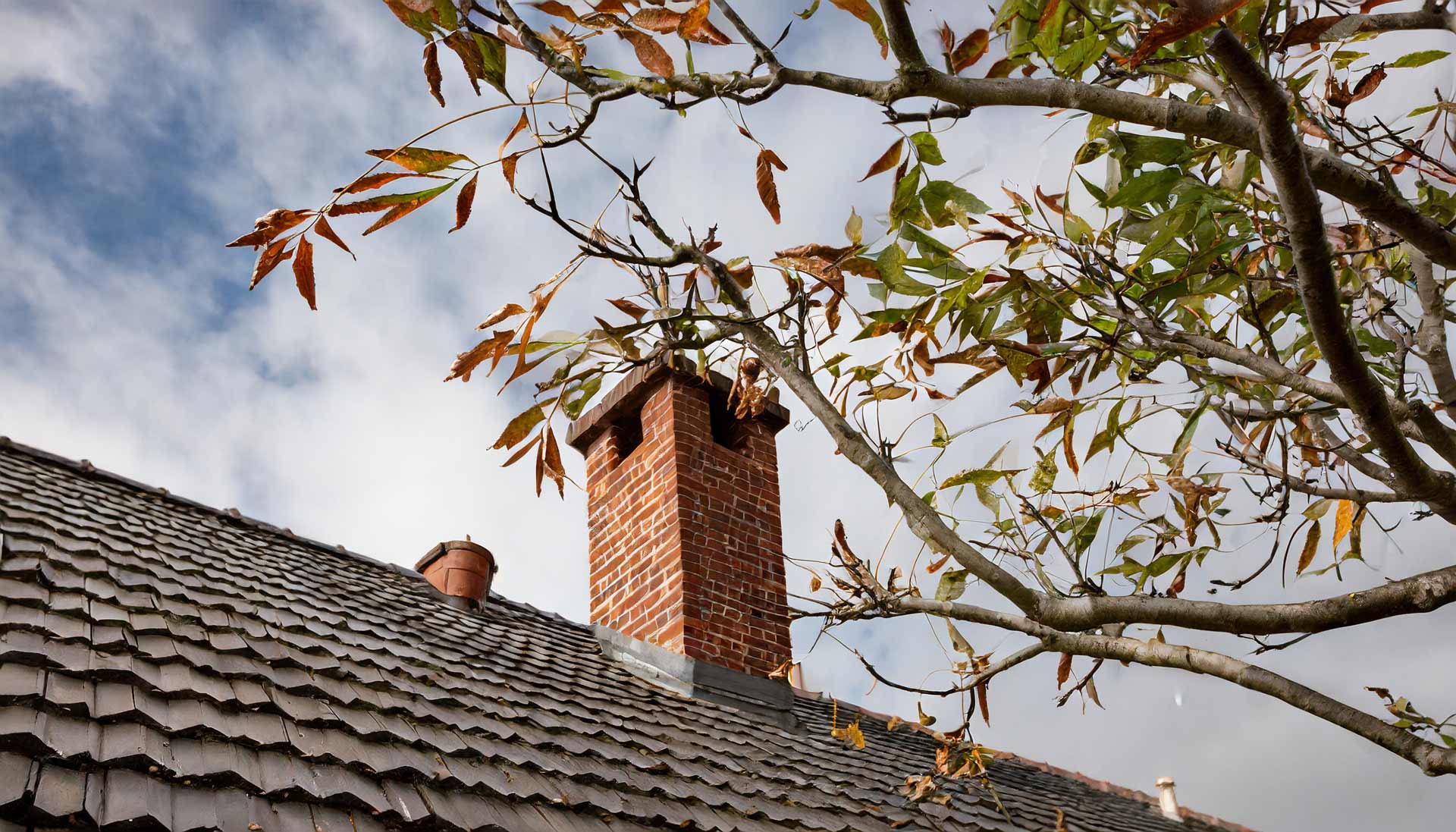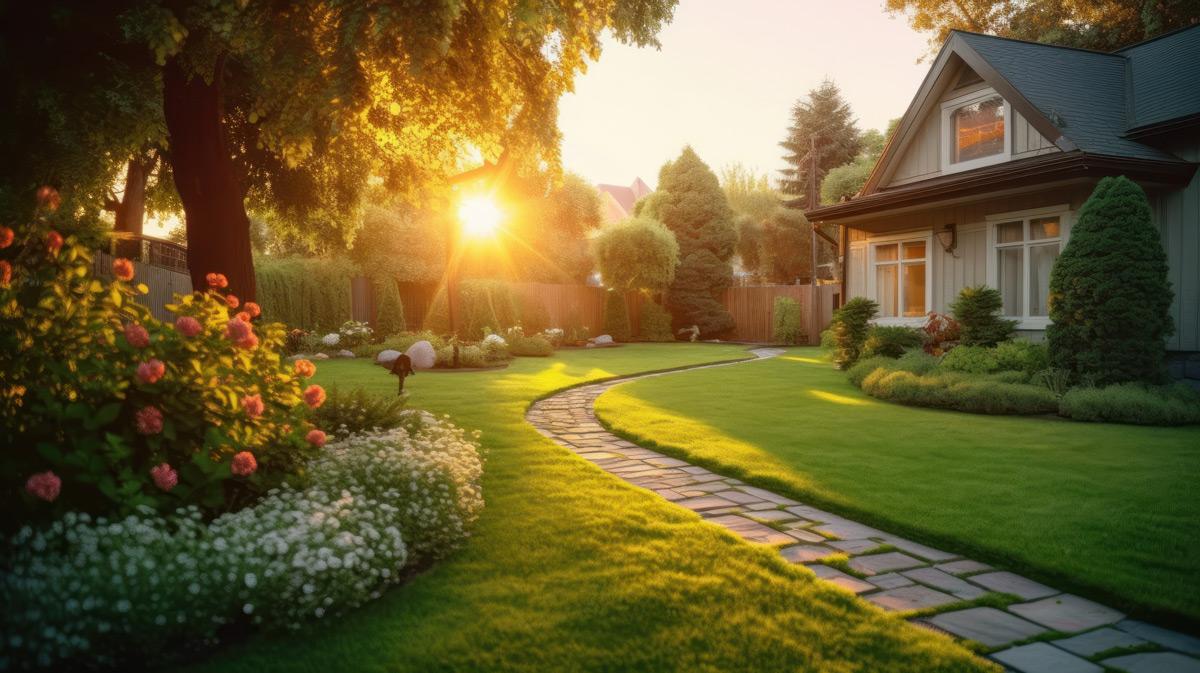Tree and Fireplace Home Safety
When it comes to ensuring the safety and longevity of your home, certain precautions are essential. One such measure that often goes overlooked is the distance between trees and chimneys. In this article, we’ll explore why maintaining a safe distance between trees and chimneys is crucial for home safety and structural integrity.
Understanding the Risks of Tree Branch Dangers
Wildlife Hazards and Chimney Safety
Squirrels and raccoons can inadvertently contribute to safety concerns between overhanging trees and chimneys. These animals are known for climbing trees and may seek shelter or build nests near or inside chimneys. If trees are located too close, they provide easy access for these critters to enter and potentially block or damage the chimney flue. Additionally, their nesting materials can become fire hazards if ignited by sparks or embers. Therefore, maintaining a safe distance between trees and chimneys helps mitigate the risk of animal-related chimney blockages and fire hazards.
Chimney Blockage
One of the primary risks associated with trees is the potential for blockage. Overhanging branches and debris can obstruct flues, preventing proper ventilation and airflow. This obstruction can lead to inefficient fireplace operation and an increased risk of carbon monoxide buildup within the home.
Increased Fire Hazard
Another significant concern is the heightened fire hazard posed by trees near chimneys. Dry leaves, twigs, and branches can easily ignite from sparks or embers emitted by the chimney, especially during periods of high heat or drought. Once ignited, these tree debris can rapidly escalate into fires, posing a danger to both the home and its occupants.
Damage to Chimney Structure
In addition to fire risks, trees near can cause physical damage to the structure itself. Tree branches rubbing against or falling onto chimneys can result in cracks, leaks, and other structural issues. Over time, this damage can compromise the integrity of the fireplace and necessitate costly repairs.
Benefits of Keeping Trees Away
Enhanced Chimney Performance
By maintaining a safe distance between trees and chimneys, homeowners can ensure enhanced fireplace performance. Unobstructed airflow and ventilation allow for more efficient fireplace operation, reducing the risk of smoke backup and carbon monoxide buildup within the home.
Reduced Fire Risks
Keeping trees away from chimneys minimizes the potential for fires due to tree debris. With fewer combustible materials in close proximity to the top of the chimney, homeowners can enjoy greater peace of mind knowing that their home is safer from fire hazards.
Longer Chimney Lifespan
Furthermore, preventing physical damage to the chimney structure helps prolong its lifespan. By avoiding cracks, leaks, and other structural issues caused by trees, homeowners can save on repair and maintenance costs in the long run.
Tips for Maintaining a Safe Distance
Regular Tree Trimming and Pruning of Overhanging Branches
One of the most effective ways to avoid trees limbs from falling is through regular tree trimming and pruning. Homeowners should schedule routine maintenance to trim branches away, ensuring a safe distance is maintained to protect your chimney.
Monitoring Tree Growth
It’s also essential to monitor tree growth and address any potential hazards promptly. Regularly check for overgrown branches or signs of tree damage that could pose a risk to the structure.
Choosing Chimney-Friendly Landscaping
When landscaping, opt for trees and plants that are less likely to shed debris or grow too close. Creating a clear zone at least 10 feet of the chimney and around the home minimizes fire risks and reduces the likelihood of blockages.
Protection with Chimney Cap and Distant Trees
Maintaining a safe distance between tree limbs and chimneys is crucial for home safety and structural integrity. By understanding the risks associated with trees near chimneys and implementing proactive measures to keep them at a distance, homeowners can protect their homes and enjoy greater peace of mind.
FAQs to Keep Your Chimney Safe from Falling Trees
- How close can trees safely be to a chimney? It’s recommended to keep trees at least 15 to 20 feet away to reduce fire risks and prevent blockages.
- Can I trim tree branches near my chimney myself? While minor trimming may be possible for homeowners, it’s advisable to hire professional tree services for safe and effective pruning, especially for larger trees or branches.
- What are signs that trees near my chimney are causing damage? Signs of damage caused by trees include cracks, leaks, or visible physical contact between branches and the structure.
- Are there specific tree species to avoid planting near chimneys? Trees known for shedding leaves, twigs, or branches frequently should be avoided to minimize fire risks and blockages. These should not be placed close to the chimney.
- How often should I inspect trees near the home for potential hazards? Homeowners should inspect trees near the home regularly, especially before the start of the heating season, to identify and address any potential hazards promptly.
Does Homeowners Insurance Cover Damage Caused by Trees Near Chimneys?
Homeowners insurance typically provides coverage for damage caused by trees near chimneys if it’s considered a covered peril. For example, if a tree falls onto your chimney during a storm, damaging it, your insurance policy may cover the repair or replacement costs. However, coverage may vary depending on the specific terms of your policy and the circumstances of the damage. It’s crucial to review your policy carefully and consult with your insurance provider to understand the extent of coverage for tree-related damage. Additionally, maintaining a safe distance as well as regular inspection and maintenance of both, can help prevent potential damage and minimize the risk of insurance claims.




